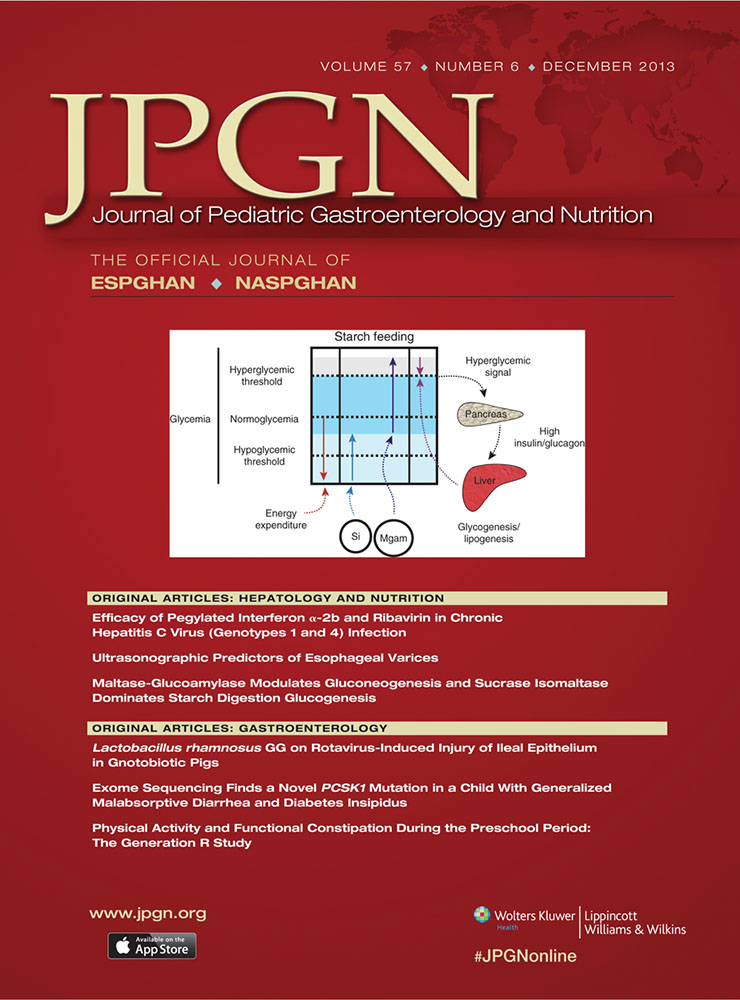Ultrasonographic Predictors of Esophageal Varices
The authors report no conflict of interest.
ABSTRACT
Objective:
The aim of this study was to identify ultrasonographic predictors of esophageal varices (EVs) in children and adolescents with chronic liver disease (CLD) and extrahepatic portal venous obstruction (EHPVO).
Methods:
This study evaluates 53 patients younger than 20 years with CLD or EHPVO and no history of bleeding or prophylactic EVs treatment. They were divided into 2 groups: group I (35 with CLD) and group II (18 with EHPVO). Splenorenal shunt (SS), gallbladder wall varices, gallbladder wall thickening (GT), and lesser omental thickness (LOT) were compared with the presence of EVs, gastric varices, and portal hypertensive gastropathy (PHG). Univariate (χ2 test, Fisher exact test, and Wilcoxon signed rank test) and multivariate (logistic regression) analyses were performed. The area under the receiver operating curve was calculated.
Results:
EVs were observed in 48.5% of patients with CLD and in 83.3% of patients with EHPVO. SS (P = 0.0329) and LOT (P = 0.0151) predicted EV among patients with CLD. A median of 5.3 mm of LOT was considered a predictor of EVs among these patients. Multivariate analysis showed SS as an independent predictor of EVs in patients with EHPVO (odds ratio 15). Gallbladder varices (P = 0.0245) and GT (P = 0.0289) predicted EVs among patients with EHPVO. PHG occurred more often among patients with CLD who had SS (P = 0.0384) and greater LOT (P = 0.0226).
Conclusions:
SS and a greater LOT were indicative of EV among children and adolescents with CLD. Gallbladder varices and GT were indicative of EVs among patients with EHPVO. SS and a greater LOT were indicative of PHG among patients with CLD.




